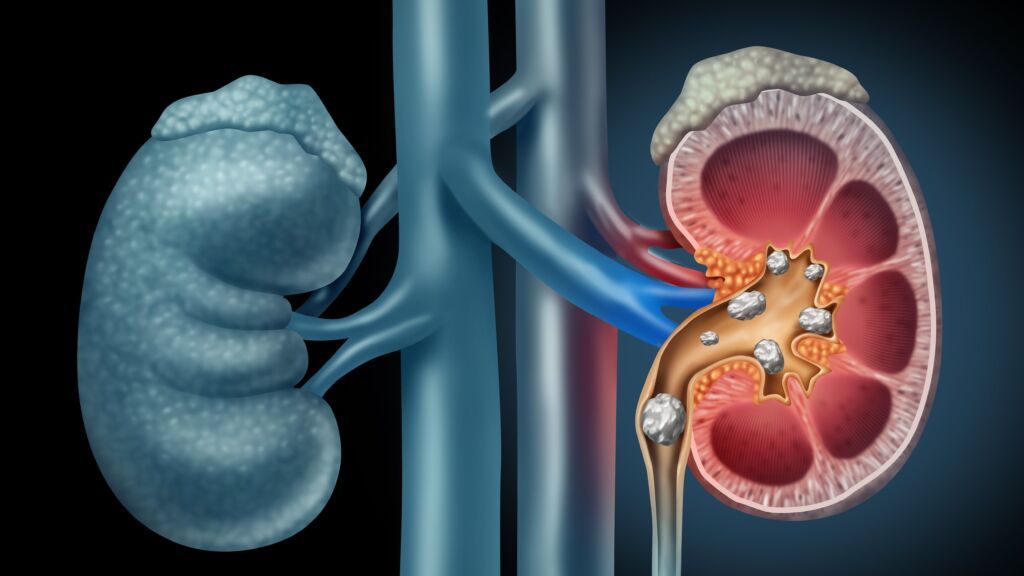Kidney stones are often agonizingly painful, but they are not life-threatening. However, sufferers should still consult a specialist since they may be at risk of more serious diseases.
The pain is sudden and acute: the most common sign of a kidney stone is pain in either side of the lower back, the abdomen or the bladder region. In some cases, the cramp-like pain is so severe that the sufferer has to be hospitalized right away. Others go to the doctor when they see blood in their urine.
Kidney stones only make their presence felt when they are causing problems. “Pain occurs when kidney stones get stuck as they leave the body,” explains PD Dr. Harald Seeger, Chief Physician at Zurich University Hospital’s nephrology clinic. Small stones measuring less than half a centimetre are often excreted unnoticed in the urine.
Kidney stones are minerals or metabolic products that solidify into crystals rather than staying dissolved in the urine. They are relatively common: one in five men and one in ten women will be affected at some time in their lives. The risk is highest in people aged between 30 and 50.
Kidney stones are not usually life-threatening. In most cases of acute renal colic, drinking plenty of fluids and taking medication if necessary will enable the stone to leave the body. If this doesn’t occur, the urologist will remove the stone endoscopically. Open surgery may be required in rare cases where there are extremely large stones in the pelvis.
In any case, expert Seeger advises sufferers to consult a specialist, not least because the options available for treating kidney stones are now very good. There are various types of kidney stones with causes and risk factors that in some cases are specific to each type. “Our recommendations vary accordingly.” The specialists investigate the stone in the laboratory and take blood and urine samples depending on the additional tests required. The results are important both for treatment purposes and for prevention. These patients not only have a higher risk of developing further kidney stones, they may also develop renal insufficiency or cardiovascular disease.
Kidney stones most commonly consist of the salt calcium oxalate. Oxalate is manufactured by the body itself and also consumed in various foods such as rhubarb or spinach. If the concentration of oxalate in the urine is too high, it can bond with calcium and crystallize into a hard stone. In contrast, kidney stones made of uric acid can be dissolved with the help of medication. More rarely, kidney stones are the result of infection or hereditary disease, as is the case with so-called cystine stones.
According to Seeger, people at higher risk of developing kidney stones should take steps to prevent them. This is for example the case when they have a family history of kidney stones. “In these cases, we recommend drinking 2 to 2.5 litres a day.” It is also important to take daily exercise and eat a diet with a balanced intake of animal and plant products, i.e. not too much meat, salt, fat and sugar but plenty of salads, fruit and vegetables.
Zurich University Hospital offers numerous diagnostic and treatment measures as well as consultations with specialists. The specialists at the nephrology and urology clinics work closely with the hospital’s nutritionists. Since kidney stones are one of the focal areas of research at both clinics, patients can also benefit from innovative treatments.
